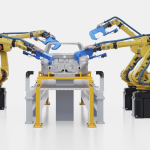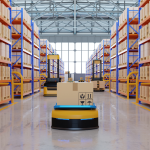At ProMat 2025, Locus Robotics revealed its latest innovation—an AI-driven, zero-touch order fulfillment system that promises faster deployment, lower labor costs, and round-the-clock operational efficiency.
Automation That Moves the Needle on Cost and Speed
Locus Robotics has lifted the lid on its most ambitious product to date. Unveiled during a live demonstration at ProMat 2025, the Locus Array is a fully automated, AI-powered order fulfillment system designed to eliminate manual handling, accelerate picking, and dramatically lower the cost per order in both greenfield and existing warehouse environments.
Described by Locus CEO Rick Faulk as a “zero-touch” system, the Array uses AI to orchestrate the entire fulfillment process—minimizing human involvement while maximizing accuracy and throughput. It offers double-deep tote storage that covers 100% of SKUs, enabling faster and more efficient picking in high-density operations. The system is built for 24/7 performance and integrates directly into Locus’s wider ecosystem, including its Origin and Vector robots, to automate workflows end-to-end.
Perhaps most compelling for warehouse leaders is the system’s deployability. Unlike legacy automation projects that can take many months to roll out, the Locus Array is designed for implementation in just weeks. This significantly reduces infrastructure disruption and speeds up time to value. According to Faulk, the system can process up to 10,000 orders per day, supports induction from flow racks, and functions reliably on uneven flooring. It offers three tote sizes and double-aisle picking capabilities, making it especially well-suited for narrow-aisle environments.
With pilot programs now underway across multiple global customers, the company expects limited commercial availability of the Array beginning in early 2026.
A Clear Signal for the Future of Fulfillment
For warehouse, fulfillment, and operations leaders, Locus’s unveiling of the Array isn’t just a product launch—it’s a signal of where high-performance distribution is heading. In a market where labor remains constrained and demand patterns are increasingly volatile, the ability to deploy scalable automation quickly—and without redesigning the entire facility—may prove decisive. The promise of true “zero-touch” fulfillment isn’t merely about cutting headcount; it’s about rethinking productivity at the structural level. Leaders evaluating robotics investment in 2025 should take note: automation is no longer a long-term project. It’s rapidly becoming an off-the-shelf, operational advantage.







